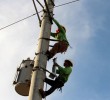Kadamay: “Ang mga trabahante dinhi sa siyudad gagmay ra og sweldo apan ang mga palaliton mahal kaayo. Unsaon man nila pagkabayad sa amortisasyon sa pabalay?” (Workers here in urban areas receive minimal salaries against the high prices of commodities. How can they pay the housing amortization?)
By ALEX D. LOPEZ
Davao Today
DAVAO CITY, Philippines — One of the largest housing developers group converged here and unveiled its roadmap but an urban poor group remains skeptic that this would solve the country’s housing problem.
During “The Philippine Housing Industry Plan: 2012-2030,” a conference held last September 27-28, the Subdivision and Housing Developers Association (SHDA) committed one million housing units by 2016, another two million by 2022 and another seven million from 2022 to 2030, supplying a total of 10 million units in a period of 18 years.
However, urban poor group Kalipunan ng Damayang Mahihirap (Kadamay) countered SHDA’s claims, saying that increasing the pace of housing production still cannot solve the worsening housing problem in the country.
“Kawad-on ug walay pagtagad sa panggamhanan ang mga nag-unang hinungdan sa problema sa pagka-walay pinuy-anan sa kadaghanan sa mga Pilipino (Poverty and neglect of the government are the root causes of the housing problem of Filipinos),” said Toto Bolcan, the spokesperson of Kadamay in Davao City.
Bolcan said there is no guarantee that low-income informal settlers can own housing units given the fact that amortizations are too expensive.
According to SHDA, the country’s housing production is behind by 3.9 million units, of which, 63.55 percent is classified under economic housing, 21.48 percent under socialized housing and the remaining 14.97 percent under low-cost housing.
SHDA added that this does not include the 832,046 households that cannot afford financing. Paul Tanchi, SHDA president, said if the numbers are unchecked, the backlog could balloon to 6.5 million by 2030.
But for Bolcan, “Ang mga trabahante dinhi sa siyudad gagmay ra og sweldo apan ang mga palaliton mahal kaayo. Unsaon man nila pagkabayad sa amortisasyon sa pabalay? (Workers here in urban areas receive minimal salaries against the high prices of commodities. How can they pay the housing amortization?)”
In an interview with the local media, Tanchi said the government can afford to build houses with very low amortization by pouring in enough funds to develop the project, as it finances other programs.
Tanchi said he was referring to government’s 4Ps program or the Pantawid Pamilyang Pilipino Program, President Noynoy Aquino’s flagship anti-poverty billion-peso program which provides conditional cash grants to the poorest of the poor.
Kadamay’s Bolcan said the immediate problem to be addressed is the severe poverty that majority of Filipinos experience due to the continued implementation of policies, programs and projects that only benefit the local and foreign capitalists.
Bolcan cited that informal settlers in urban areas come from the rural areas; they were either displaced by the continued militarization in the countryside or forced to seek low-paying jobs in the cities due to landlessness and the absence of government support to develop their farms. (Alex D. Lopez/davaotoday.com)
World









